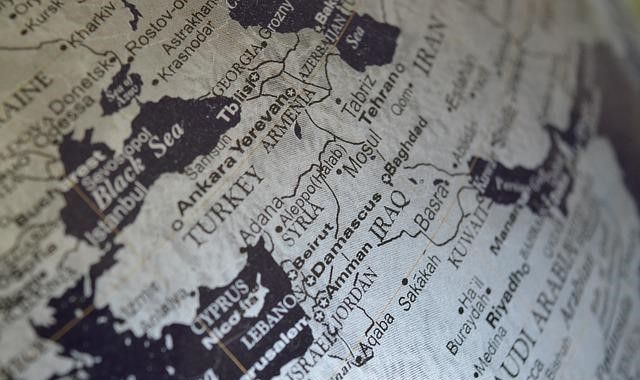Hot on the heels of disruptions to supply chains caused by the COVID health pandemic, the Russian invasion of Ukraine has caused further hiccups for the procurement and distribution of industrial ingredients.
Governmental economic sanctions, self-imposed bans by numerous multinationals, reduced investment into projects in Russia, and a complete block on logistics through the war zone are all preventing or hampering the supply of raw materials.

While Russia may not seem like a particularly important cog in global production, it is the world’s 11th largest economy and a provider of many vital materials. In fact, data supplied by industry consultants Dun & Bradstreet, shows while there are 15,000 Tier 1 suppliers in Russia, and more than “7.6 million Tier 2 supplier relationships with Russian entities globally. More than 374,000 businesses—90% of which are in the United States— rely on Russian suppliers.”
This situation is forcing both manufacturers and buyers to react in increasingly extreme, yet logical, ways. These include:
1. Manufacturers are looking to alternative and/or back up suppliers.
In many cases, businesses have already been forced to look for alternative sources of raw materials as the supply chain crisis means that regular supplies are inaccessible due to lockdowns or logistics issues. The ongoing situation in Ukraine has intensified this need, as many feedstocks can no longer be obtained from Russia or Ukraine.

2. Manufacturers are doubling down on onshoring.
The COVID-19 pandemic brought the need for shorter supply chains to the fore as the logistics system collapsed and different regions went under stay-at-home orders and lockdowns at contrasting times.
While global supply chains are already adjusting and becoming more regional or local in structure, the war in Ukraine will further highlight the need to remove the uncertainty in dealing with overseas suppliers.
3. ‘Friend-shoring’ is becoming an increasingly important factor.
As it is not always possible to source a feedstock domestically or even close to home, the issue of finding a supplier in a safe, stable region is of growing importance. Suppliers in close allies/NATO members/inside the EU etc. will have an innate advantage over others.

4. Manufacturers are updating their inventory levels.
For many decades, the trend for industry has been to minimise inventories and aim for ‘just-in-time’ deliveries. The war in Ukraine and the pandemic-created supply chain crisis is forcing manufacturers to rethink this strategy.
Inventory buffers are now becoming standard for many companies, especially for essential raw materials.
5. Improved planning and risk management.
Most manufacturers were not prepared for the pandemic and its consequences. Having learnt from this, companies are now investing, pre-planning, and risk assessing so as to better manage future unexpected events.
As Jim Kilpatrick, Global Supply Chain & Network Operations leader at industry consultant Deloitte explains, “While it was common to state there was no playbook for COVID-19, the reality is that most organizations did not have any playbook at all.”
Russia’s invasion of Ukraine will further highlight the importance of emergency planning. Establishing risk management frameworks and back-up systems is therefore become more commonplace.

6. Readiness for digital warfare.
Supply chains are become more and more digital. The increasing use of online contracts, electronic transactions, smart factories and distribution centres, more staff working from home, and negotiations being conducted remotely, will require both suppliers and purchasers to increase their cybersecurity.
While larger corporations and governments have been blocking cyberattacks from rogue states and criminals for many years, if a manufacturer or its supplier are located in a country that goes to war then those businesses may become targets for digital warfare.

7. Improved understanding of geopolitics.
The war in Ukraine has made it more important for business leaders to follow international politics as it impacts business. ‘Global scenario planning’ may therefore become relevant for many manufacturers as a way to predict where risks to supply chains are and to prepare a response should the worst happen.
Evidence of this already being in place was noted in a recent Deloitte report on how material supplies have been affected by the war in Ukraine. Stating that, “… the largest companies in the semiconductor industry had increased stockpiles of palladium and neon, two critical elements in semiconductor production that are highly reliant on supply sources in Russia.”
Many other procurement officers may also have wished they could have predicted the war in Ukraine and planned accordingly.

The war in Ukraine has reminded everyone of the chaos and devastation that war creates. The human suffering, damage to property, and knock-on impact to logistics and raw material supplies is shocking.
This list is not definitive in the number of ways that manufacturers are having to react. The supply of industrial ingredients is never an effortless process – and this terrible war is making everything a lot harder for everyone.
Photo credit: Erikawittleib from Pixabay, Pete Linforth, Alvaro Reyes on Unsplash, Marek Studzinski, Barret Ward, Gerd Altman, & Benjamin Wagner